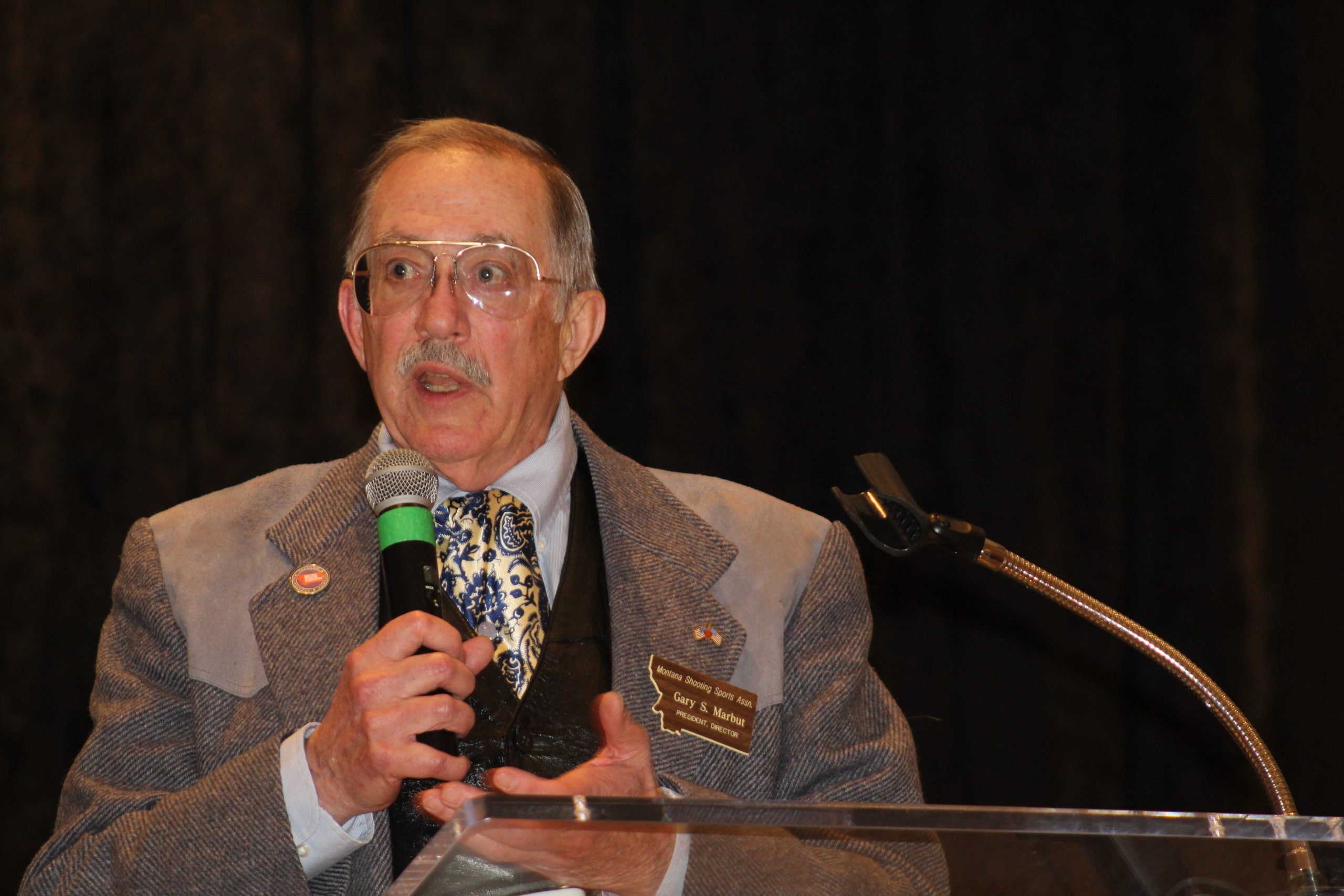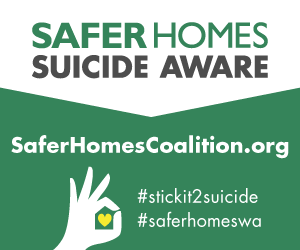
By Gary Marbut, President
Montana Shooting Sports Association
(Special to TheGunMag.com)
Editor’s Note: Gary Marbut, president of the Montana Shooting Sports Assn. has just issued his report on this year’s legislative session, and graciously provided a copy to TGM.
Here’s the rundown for the session.
Successes
Senate Joint Resolution 7, urging the Board of Regents to get the various units of the Montana University System (MUS) involved in shooting sports, as club sports, intramural sports, and interscholastic sports. SJ 7 has a longish list of sports available, from archery to precision rifle. SJ 7 was carried for MSSA by Senator John Fuller. It got a strong vote is Senate and House, and representatives of the MUS and the Associated Students of the University of Montana spoke in favor of the measure in committee hearings. Resolutions express the will of the Legislature and do not go to the Governor, although Governor Gianforte issued a statement saying he supports this idea. So, SJ 7 is a done deal. Now it will be up to you and me to press and help various campuses to make something happen in line with SJ 7.
Shooting range funding. Every session we must go back to the Legislature to push for continued and additional funding for the Shooting Range Development Program (SRDP) that MSSA got started in 1989, and to implement the bill MSSA got passed in 1999. The SRDP uses only hunter license fee revenue to make 50-50 matching grants to local clubs to improve ranges. Every session we have fought DFWP over SRDP funding. They’ve always seen this program as their ugly stepchild, have lowballed budget requests for it, have lobbied hard against increased funding, and have occasionally stolen the money appropriated for the SRDP by the Legislature to use for other purposes.
We have argued that if people are not shooting then they won’t be hunting and funding DFWP with license purchases. Despite DFWP’s obstruction, the SRDP has been hugely successful. We estimate that about $25 million has been invested in Montana shooting ranges since MSSA initiated the program 35 years ago. There is a good chance that the range where you shoot has been improved with SRDP grant funding.
It seems as if DFWP is finally warming up to the SRDP. This session there was $800,000 in HB 5 for the biennium for SRDP, $400,000/year. This is good for two reasons: 1) it is much more money than last session, and 2) because it is in HB 5 instead of HB 2, it is much more likely to roll over next session and be approved without a fight.
The first $400,000 has already been committed to something like 13 different shooting range projects across Montana.
One thing to watch for: DFWP is imagining agency growth, mission creep, and more budget if it can slide quietly into the business of building, owning, and operating shooting ranges. The problem is, DFWP doesn’t have the experience, attitude, or capacity to design or operate shooting ranges. If DFWP is able to creep into this role, it will become a bureaucratic mess. That’s what has happened in other states that have tried this. Enough about shooting ranges.
Ammunition Availability Act (AAA). In 2015, MSSA got the original AAA passed. It was carried for MSSA by then State Senator Matt Rosendale. The purpose of the AAA was to stimulate the manufacture of smokeless powder, small arms primers, and cartridge brass in Montana. It offered liability protection, access to all state economic development programs, and generous tax breaks, to any entity setting up in Montana to make these ammunition components. Because of squabbles in the Senate, many of the tax breaks were amended out of the bill and a ten-year sunset for the remaining tax breaks was added. Because of this sunset, all tax incentives under the 2015 AAA expired on December 31, 2024.
HB 329 was carried for MSSA this session by Rep. Ed Byrne. This bill restored the original AAA tax breaks lost in 2025, and removed the sunset. Unfortunately, another ten-year sunset was added back in, so this version will expire in 2035. However, we hope the enhanced tax breaks will do more to attract target businesses than the tepid tax breaks have done in the past decade.
MSSA’s dream is that Montana will become self-sufficient for powder, primers, and brass (we already have bullet manufacturers). There are conditions in the AAA to require that any entities availing themselves of the benefits of the program must make their products available to Montana consumers and at a price no greater than charged out-of-state customers.
HB 329 has passed House and Senate and has been transmitted to Governor for his signature. It is presumed that he will sign it.
Failures
SB 127, carried for MSSA by Senator Theresa Manzella. This bill would have paid the defense costs for someone charged with a crime and who plead self-defense and was not convicted. This was heavily opposed by Montana County Attorneys who want to be able to ruin someone financially with defense costs even if they cannot get the accused person convicted of a crime. So much for innocent until proven guilty. You may still be punished financially for legitimate self-defense, even if you can’t be convicted.
SB 127 passed Senate Second Reading but failed on Third Reading by a vote of 23-27. A few Republicans and all Democrats voted against the bill.
HB 433 has a story with a notable twist. Before the start of the 2025 session, Rep. George Nikolakokos (R-Great Falls) called me asking to carry a “gun bill.” This outreach was unusual. Usually I select MSSA bill sponsors from among known pro-gun legislators, and someone with at least one session of experience and likely to be assigned to the committee the bill will come before. I told George that the only MSSA bill left for which I had not already selected a sponsor was one to prevent pre-trial disarmament of someone accused of a non-violent crime. I emailed George a copy of the bill draft. He said he liked and wanted to sponsor the bill, which I allowed, and which became HB 433 upon introduction.
When HB 433 came before the House Judiciary Committee, George offered amendments to water down the bill. The Committee disagreed, voted down George’s amendments, and passed the bill in its introduced form.
When HB 433 came before the full House on Second Reading, George again offered his amendments to water down the bill. As the Committee had done, the House voted down George’s amendments. Then, speaking about his unamended bill, the “gun bill” he had asked to carry for MSSA, George announced that he was now opposed to his own bill and asked all House members to join him in voting against the bill. After this announcement, all Ds and many Rs voted against HB 433 and it died.
Of course, I was shocked. MSSA has now gotten 74 bills passed. We’ve probably had that many more that were introduced but not passed. Out of all those bills, I’ve never, ever, had a sponsor flip on a bill mid-stream. That is not only anti-gun, it is a betrayal of trust. We will address that come election season.
SB 176, carried by Senator Ken Bogner was to prohibit discrimination concerning firearms in finance and insurance. This bill died in the Senate Judiciary Committee after heavy opposition by the banking and insurance industries, a very strong lobby in Helena.
Rep. Lee Demming (R-Laurel) introduced an updated version if MSSA’s classic “Sheriffs First” bill as HB 439. It passed committee but failed on House Second Reading with a vote of 44-56. All Ds voted against, as did many Rs.
Not MSSA bills
HB 899 was an import by the National Shooting Sports Foundation of Connecticut (NSSF) (no connection to MSSA). This bill was carried by Rep. Carrie Seekins-Crow (R-Billings). It would have begun planning for one large, state-owned, and state-managed central shooting sports complex somewhere in Montana.
An NSSF representative approached me with this idea before the session. I told him then that this might be a fine idea for NSSF’s home state of Connecticut, but it is a terrible idea for Montana. What Montana needs I told him, are safe and suitable places for people to shoot that are all over the state and 20 minutes drive from where people live. What we definitely don’t need, I told him, is one gigantic money pit of a range that is five hours away from 95% of Montana’s population, especially if that facility would ultimately be operated by an incompetent DFWP.
NSSF had Rep. Seekins-Crow introduce the bill despite my advice. MSSA opposed the bill at its first committee hearing, where I told committee members just what I’d told NSSF before the session. At my suggestion, the sponsor offered amendments to strike the word “complex” wherever it appeared in the bill, which amendments were made.
The bill passed and will set up this complicated, makework process to look into shooting ranges (not “complex”) in Montana. The long term result of this, I predict, will be DFWP pushing to build and manage shooting ranges all over Montana, in order to expand its agency, mission, and budget. Stay tuned …
HB 809 was introduced by Rep. Braxton Mitchell, to prohibit local governments from enacting or enforcing “red flag” laws, otherwise called extreme risk protection orders or ERPOs. Braxton approached me about this and I told him it was unnecessary because local governments are already prohibited by state law from regulating firearms in any way, courtesy of MSSA’s LR 130 and HB 102 in 2021. He insisted he wanted to do it anyway. MSSA did not support or oppose – we stayed out of it. HB 809 passed and has been signed by the Governor.



